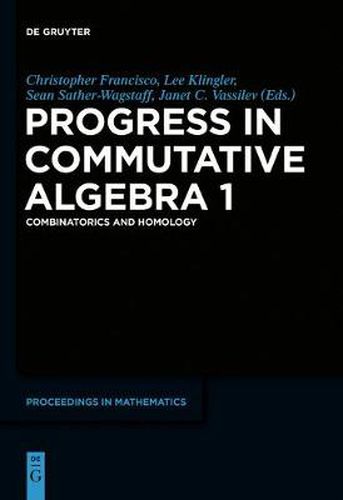Readings Newsletter
Become a Readings Member to make your shopping experience even easier.
Sign in or sign up for free!
You’re not far away from qualifying for FREE standard shipping within Australia
You’ve qualified for FREE standard shipping within Australia
The cart is loading…






This is the first of two volumes of a state-of-the-art survey article collection which originates from three commutative algebra sessions at the 2009 Fall Southeastern American Mathematical Society Meeting at Florida Atlantic University. The articles reach into diverse areas of commutative algebra and build a bridge between Noetherian and non-Noetherian commutative algebra. These volumes present current trends in two of the most active areas of commutative algebra: non-noetherian rings (factorization, ideal theory, integrality), and noetherian rings (the local theory, graded situation, and interactions with combinatorics and geometry).
This volume contains combinatorial and homological surveys. The combinatorial papers document some of the increasing focus in commutative algebra recently on the interaction between algebra and combinatorics. Specifically, one can use combinatorial techniques to investigate resolutions and other algebraic structures as with the papers of Floystad on Boij-Soederburg theory, of Geramita, Harbourne and Migliore, and of Cooper on Hilbert functions, of Clark on minimal poset resolutions and of Mermin on simplicial resolutions. One can also utilize algebraic invariants to understand combinatorial structures like graphs, hypergraphs, and simplicial complexes such as in the paper of Morey and Villarreal on edge ideals.
Homological techniques have become indispensable tools for the study of noetherian rings. These ideas have yielded amazing levels of interaction with other fields like algebraic topology (via differential graded techniques as well as the foundations of homological algebra), analysis (via the study of D-modules), and combinatorics (as described in the previous paragraph). The homological articles the editors have included in this volume relate mostly to how homological techniques help us better understand rings and singularities both noetherian and non-noetherian such as in the papers by Roberts, Yao, Hummel and Leuschke.
$9.00 standard shipping within Australia
FREE standard shipping within Australia for orders over $100.00
Express & International shipping calculated at checkout
This is the first of two volumes of a state-of-the-art survey article collection which originates from three commutative algebra sessions at the 2009 Fall Southeastern American Mathematical Society Meeting at Florida Atlantic University. The articles reach into diverse areas of commutative algebra and build a bridge between Noetherian and non-Noetherian commutative algebra. These volumes present current trends in two of the most active areas of commutative algebra: non-noetherian rings (factorization, ideal theory, integrality), and noetherian rings (the local theory, graded situation, and interactions with combinatorics and geometry).
This volume contains combinatorial and homological surveys. The combinatorial papers document some of the increasing focus in commutative algebra recently on the interaction between algebra and combinatorics. Specifically, one can use combinatorial techniques to investigate resolutions and other algebraic structures as with the papers of Floystad on Boij-Soederburg theory, of Geramita, Harbourne and Migliore, and of Cooper on Hilbert functions, of Clark on minimal poset resolutions and of Mermin on simplicial resolutions. One can also utilize algebraic invariants to understand combinatorial structures like graphs, hypergraphs, and simplicial complexes such as in the paper of Morey and Villarreal on edge ideals.
Homological techniques have become indispensable tools for the study of noetherian rings. These ideas have yielded amazing levels of interaction with other fields like algebraic topology (via differential graded techniques as well as the foundations of homological algebra), analysis (via the study of D-modules), and combinatorics (as described in the previous paragraph). The homological articles the editors have included in this volume relate mostly to how homological techniques help us better understand rings and singularities both noetherian and non-noetherian such as in the papers by Roberts, Yao, Hummel and Leuschke.